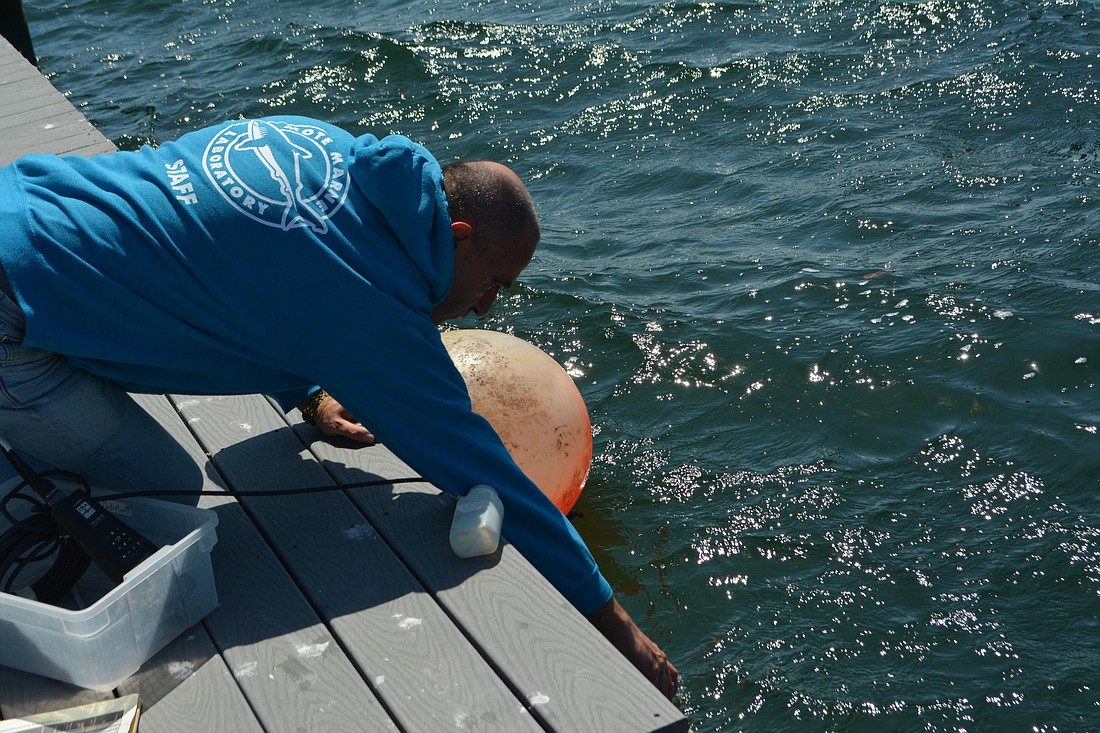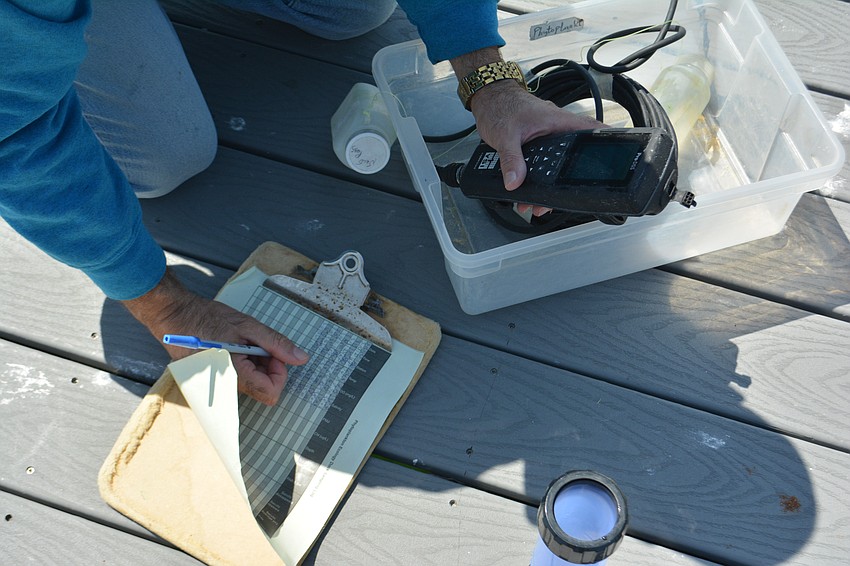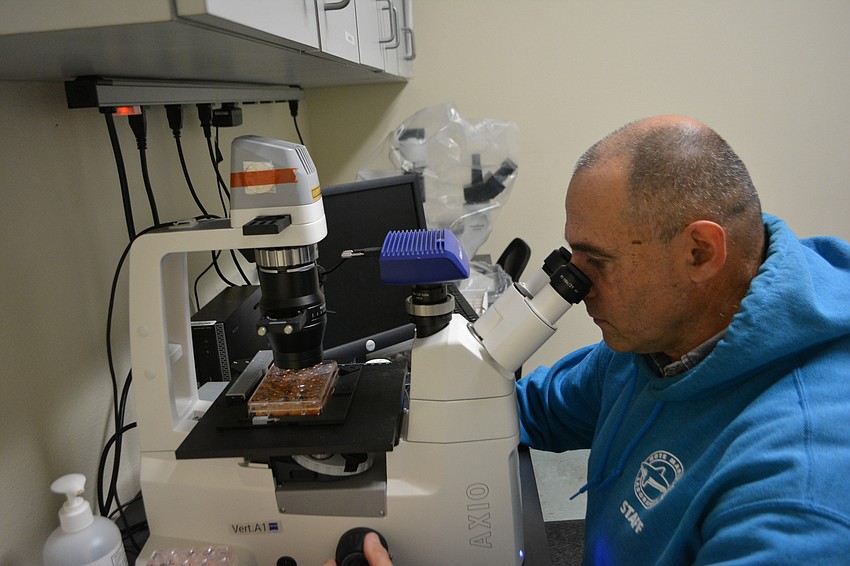- April 11, 2025
-
-
Loading

Loading

Even as red tide effects subside, Mote Marine Laboratory and Aquarium researchers continue to take daily samples of local waters to ensure regular data is kept on the organism Karenia brevis’ presence and effects on human and marine life.
Red tide can mean death for some marine animals. It can also cause respiratory impacts for people spending time by the water and neurotoxic shellfish poisoning in humans when ingested.
Water sampling is part of Mote’s cooperative red tide program with the Fish and Wildlife Research Institute of the Florida Fish and Wildlife Conservation Commission.
“(The sampling) goes back many years, decades of partnership with state and local governments,” Vice President of Mote’s Sponsored Research and Coastal Policy Programs Kevin Claridge said.

Samples collected from partners at Sarasota County are gathered weekly and look specifically for particular cells and toxins. Other samples are collected on a quarterly basis and focus on conditions of local estuaries.
Following analysis, data is collected and returned to partners for publication on websites and used in red tide maps and other more digestible formats for the general public.
Senior Biologist Valeriy Palubok has been collecting samples daily from one of the laboratory’s docks for nearly 20 years and has firsthand experience with the unpredictability of harmful algal blooms that lead to red tide.
When he takes a water sample, he measures factors including salinity and water temperature. Both are key components of the laboratory’s sample database regardless of the presence of a harmful algal bloom.

“(Red tide) started very soon after (Hurricane Ian) in the autumn, and it never went away,” Palubok said. “It’s been a continuous red tide.”
First reports of the current red tide bloom began Oct. 19, 2022, and remain in some areas as of March 27. The Observer’s red tide status map for Manatee and Sarasota counties has reports of very low or no K. brevis presence.
Mote has been in conversation with state partners to share findings from samples and look at long-term trends.
An increase in conversations geared toward the harmful impacts of red tide and the need for additional research tend to happen when the bloom is in full swing, but Mote scientists want to encourage further discussion regardless of the presence of a bloom.
Program Manager of the Phytoplankton Ecology Program Vincent Lovko said recent water samples aren’t necessarily showing anything worrisome that should set off alarms to the public.
“Of course everyone asks, ‘is it getting worse?’” he said. “People want to think that there is a logical answer, but as scientists we can’t really say that without being able to connect the data.”
Sampling local waters over decades has been able to give scientists a basis for ensuring accurate information and educating visitors and residents on the organism and its effect no matter how many red tide cycles they have experienced.
It is important for residents and visitors to keep in mind that while humans can always make red tide conditions worse, K. brevis is a naturally occurring organism that has been documented in the Gulf of Mexico as far back as the 1700s.
When the harmful algal blooms of red tide will appear and how long they will stay are largely unpredictable, but water sampling and study of conditions including speed and direction of wind and water currents can help forecast red tide movement.
Physical, chemical, biological and ecological conditions influence the red tide’s growth and persistence.